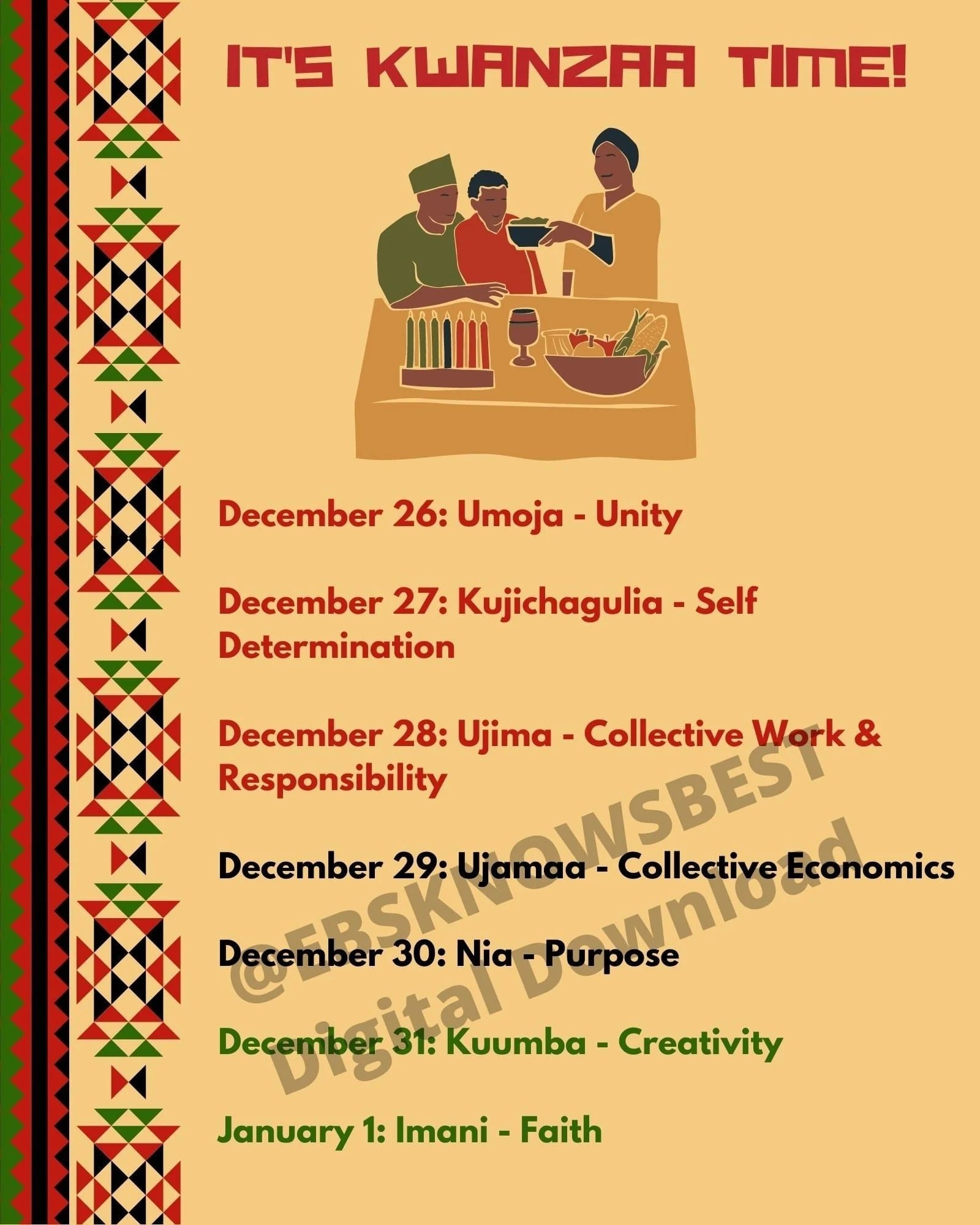Kwanzaa’s Nguzo Saba: Seven principles illuminating a path of communal strength and cultural affirmation. More than a holiday, Kwanzaa’s principles offer a framework for year-round self-reflection and community building. Rooted in African traditions, Kwanzaa’s seven principles resonate with universal values of unity, self-reliance, and collective responsibility. Each night, a candle on the Kinara ignites, symbolizing the daily exploration and celebration of Kwanzaa’s powerful principles.
Understanding Kwanzaa’s Origins
Created in 1966 by Dr. Maulana Karenga, a professor and activist, Kwanzaa emerged as a response to the social and political climate of the time. Dr. Karenga sought to unite and empower the Black community, celebrating African heritage and culture amidst a backdrop of racial tension and calls for social change.
Celebrated annually from December 26th to January 1st, Kwanzaa serves as a time for reflection, renewal, and a reaffirmation of shared values. It’s a celebration that transcends geographical boundaries, resonating with people of African descent and those who appreciate the beauty of cultural diversity.
The Nguzo Saba: A Closer Look at the Seven Principles
At the heart of Kwanzaa lie the Nguzo Saba, seven guiding principles that form the foundation of the celebration. Each principle, represented by a candle on the Kinara (candleholder), offers a pathway to personal growth and collective progress.
1. Umoja (Unity)
- Meaning: Umoja encourages us to strive for unity in all aspects of our lives—within our families, communities, and ourselves. It emphasizes the interconnectedness of humanity, reminding us that we are stronger together.
- Importance: When we prioritize unity, we create a sense of belonging and shared purpose. It allows us to celebrate our differences while recognizing our common ground.
2. Kujichagulia (Self-Determination)
- Meaning: Kujichagulia is about empowerment and taking control of our own narratives. It encourages us to define ourselves, set our own goals, and work towards a future of our own making.
- Importance: This principle reminds us that we have the power to shape our destinies. It encourages self-reliance, creativity, and the courage to forge our own paths.
3. Ujima (Collective Work and Responsibility)
- Meaning: Ujima emphasizes the importance of collaboration and shared responsibility within a community. It’s about working together towards common goals, supporting each other’s growth, and addressing challenges collectively.
- Importance: This principle highlights the strength in unity. When we work together, we can achieve far more than we ever could alone.
4. Ujamaa (Cooperative Economics)
- Meaning: Ujamaa encourages us to support Black-owned businesses and create economic opportunities within our communities. It’s about building a strong economic foundation that benefits everyone.
- Importance: Ujamaa promotes economic empowerment and sustainability. By supporting each other’s businesses, we create a more equitable and prosperous future.
5. Nia (Purpose)
- Meaning: Nia calls on us to use our talents and resources to make a positive impact on the world around us. It’s about identifying our passions and using them to contribute to the greater good.
- Importance: When we have a shared sense of purpose, we are more likely to make meaningful contributions to our communities and the world.
6. Kuumba (Creativity)
- Meaning: Kuumba encourages us to express ourselves creatively and use our imaginations to make the world a more beautiful and vibrant place.
- Importance: Creativity is essential for innovation and progress. It allows us to think outside the box, find new solutions, and leave a positive mark on the world.
7. Imani (Faith)
- Meaning: Imani is about having faith in ourselves, our communities, and the possibility of a brighter future. It’s about holding onto hope even in the face of adversity.
- Importance: Faith is a powerful force that can help us overcome challenges and achieve our goals. It reminds us that even in the darkest of times, there is always light ahead.
Symbols of Kwanzaa: A Tapestry of Meaning
Each element of Kwanzaa is infused with symbolism, enriching the celebration with deeper meaning.
- Mishumaa Sabaa (Seven Candles): The seven candles, each representing one of the Nguzo Saba, are lit progressively throughout the week.
- Kinara (Candleholder): The Kinara holds the Mishumaa Sabaa, typically with three red candles on the left, three green candles on the right, and a black candle in the center.
- Mkeka (Placemat): The Mkeka serves as the foundation, representing tradition, history, and the African continent.
- Mazao (Crops): Symbolic of the harvest, the Mazao represents the rewards of collective labor and the importance of community sustenance.
- Muhindi (Corn): Representing children and future generations, Muhindi signifies fertility, hope, and the promise of a bright future.
- Kikombe cha Umoja (Unity Cup): Used in a libation ceremony, the Unity Cup honors ancestors and signifies the interconnectedness of past, present, and future generations.
- Zawadi (Gifts): Often handmade, gifts are exchanged, emphasizing cultural heritage, creativity, and the importance of supporting Black artisans.
Kwanzaa Today: A Celebration of Enduring Relevance
Kwanzaa is a vibrant celebration of African culture and heritage, reminding us of the importance of community, self-determination, and cultural pride. Its principles continue to resonate deeply in today’s world, offering guidance and inspiration as we strive to build a more just and equitable society.
Further Exploration:
- Zarathushtra was a Persian prophet who founded Zoroastrianism.
- Take a look at these young Griselda Blanco pictures.
- Georgia Platform: A Southern Strategy, 1850s - March 31, 2025
- How many weeks is 40 days: Quick Conversion Guide for Accurate Results - March 31, 2025
- How many feet is 300 meters? 984 Feet: Understand Length Conversions Easily - March 31, 2025
















